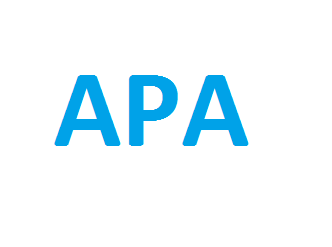
The Academic Perspective Procedia publishes Academic Platform symposiums papers as three volumes in a year. DOI number is given to all of our papers.
Publisher : Academic Perspective
Journal DOI : 10.33793/acperpro
Journal eISSN : 2667-5862
The Design of Simulator for Inter-Harmonic Detection with ESPRIT
Nedim Aktan Yalcin;Fahri Vatansever
1202
525
Abstract
Inter-harmonics which exist in non-integer multiples of main harmonics cause power quality problems. In this study, in order to overcome power quality problems, ESPRIT algorithm which is one of the methods used for inter-harmonic detection which couldnt be accomplished by conventional spectrum analysis methods such as Fast Fourier Transform was realized in MATLAB environment. Software which was prepared in MATLAB environment has properties which are creating input signals, importing external signals, plotting frequency spectrum which is computed from obtained values with ESPRIT and presenting relative error rate of real signal values and ESPRIT algorithm values.
Keywords:
Inter-harmonics, ESPRIT, Simulator
References
[1] Schmidt R. Multiple Emitter Location and Signal Parameter. IEEE Trans Antennas Prop1986.
[2] Roy R, Kailath T. ESPRIT-estimation of signal parameters via rotational invariancetechniques. IEEE Trans Acoust 1989;37:984–95. doi:10.1109/29.32276.
[3] Gu IY-H, Bollen MHJ. Estimating Interharmonics by Using Sliding-Window ESPRIT.IEEE Trans Power Deliv 2008;23:13–23. doi:10.1109/TPWRD.2007.911130.
[4] Jiefeng Xiong, Boling Wang, Shaoyong Zhang. Interharmonics analysis based onwindowed interpolation and prony algorithm. 2010 2nd Int. Asia Conf. InformaticsControl. Autom. Robot. (CAR 2010), IEEE; 2010, p. 430–3.doi:10.1109/CAR.2010.5456806.
[5] Huang CH, Lee CH, Shih KJ, Wang YJ. A robust technique for frequency estimation ofdistorted signals in power systems. IEEE Trans Instrum Meas 2010;59:2026–36.doi:10.1109/TIM.2009.2028776.
[6] Jain SK, Singh SN. Harmonics estimation in emerging power system: Key issues andchallenges. Electr Power Syst Res 2011;81:1754–66. doi:10.1016/J.EPSR.2011.05.004.
[7] Chang GW, Cheng-I Chen, Quan-Wei Liang. A Two-Stage ADALINE for Harmonics andInterharmonics Measurement. IEEE Trans Ind Electron 2009;56:2220–8.doi:10.1109/TIE.2009.2017093.
[8] Dash PK, Pradhan AK, Panda G. Frequency estimation of distorted power system signalsusing extended complex Kalman filter. IEEE Trans Power Deliv 1999;14:761–6.doi:10.1109/61.772312.
[9] Kalman RE. A New Approach to Linear Filtering and Prediction Problems. J Basic Eng1960;82:35–45. doi:10.1115/1.3662552.
[10] Prony GRB. Essai experimantal et analytique, etc. J L’Ecole Polytech 1795;1:24–76.
[11] Cooley JW, Tukey JW. An Algorithm for the Machine Calculation of Complex FourierSeries. Math Comput 1965;19:297. doi:10.2307/2003354.
[12] Grossmann A, Morlet J. Decomposition of Hardy Functions into Square IntegrableWavelets of Constant Shape. SIAM J Math Anal 1984;15:723–36. doi:10.1137/0515056.
[13] Huang NE, Shen Z, Long SR, Wu MC, Shih HH, Zheng Q, et al. The empirical modedecomposition and the Hilbert spectrum for nonlinear and non-stationary time series
[14] Mallat SG. A theory for multiresolution signal decomposition: the wavelet representation.IEEE Trans Pattern Anal Mach Intell 1989;11:674–93. doi:10.1109/34.192463.
[15] Winograd S. On computing the Discrete Fourier Transform. Proc Natl Acad Sci1976;73:1005–6. doi:10.1073/pnas.73.4.1005.
[16] Bettayeb M, Qidwai U. A hybrid least squares-GA-based algorithm for harmonicestimation. IEEE Trans Power Deliv 2003;18:377–82. doi:10.1109/TPWRD.2002.807458.
[17] Hostetter GH. Recursive Discrete Fourier Transformation. IEEE Trans Acoust1980;28:184–90. doi:10.1109/TASSP.1980.1163389.
[18] Mishra S. A Hybrid Least Square-Fuzzy Bacterial Foraging Strategy for HarmonicEstimation. IEEE Trans Evol Comput 2005;9:61–73. doi:10.1109/TEVC.2004.840144.
[19] Tarasiuk T. Hybrid wavelet-Fourier spectrum analysis. IEEE Trans Power Deliv2004;19:957–64. doi:10.1109/TPWRD.2004.824398.
[20] Mathworks.com. Matlab. The MathWorks 2019. http://mathworks.com.
[21] Yang K, Bollen MHJ. Interharmonic currents from a Type-IV wind energy conversionsystem. Electr Power Syst Res 2017. doi:10.1016/j.epsr.2016.09.010.
[22] Marz MB. Interharmonics?: What They Are , Where They Come From and What They Do.Minnesota Power Syst Conf Pap 2016. doi:10.1017/CBO9781107415324.004.
[23] Testa A, Akram MF, Burch R, Carpinelli G, Chang G, Dinavahi V, et al. Interharmonics:Theory and modeling. IEEE Trans Power Deliv 2007. doi:10.1109/TPWRD.2007.905505.
[24] Sangwongwanich A, Yang Y, Sera D, Soltani H, Blaabjerg F. Analysis and Modeling ofInterharmonics from Grid-Connected Photovoltaic Systems. IEEE Trans Power Electron2018. doi:10.1109/TPEL.2017.2778025.
[25] De Rosa F, Langella R, Sollazzo A, Testa A. On the interharmonic components generatedby adjustable speed drives. Proc. Int. Conf. Harmon. Qual. Power, ICHQP, 2002.doi:10.1109/ICHQP.2002.1221430.
[26] Yacamini R. Power system harmonics. Part 4 Interharmonics. Power Eng J 1996.doi:10.1049/pe:19960411.
[27] Sun X, Zhe C, Wei T. Harmonic frequency estimation algorithm based on ESPRIT andMSWF in power system. Open Electr Electron Eng J 2015;9:518–23.doi:10.2174/1874129001509010518.
[28] GIRD Systems I. An Introduction to MUSIC and ESPRIT. GIRD Syst Inc n.d.http://www.girdsystems.com/pdf/GIRD_Systems_Intro_to_MUSIC_ESPRIT.pdf(accessed October 14, 2019).
Cite
-
 %0 Academic Perspective Procedia (ACPERPRO) The Design of Simulator for Inter-Harmonic Detection with ESPRIT% A Nedim Aktan Yalcin , Fahri Vatansever% T The Design of Simulator for Inter-Harmonic Detection with ESPRIT% D 11/22/2019% J Academic Perspective Procedia (ACPERPRO)% P 518-524% V 2% N 3% R doi: 10.33793/acperpro.02.03.43% U 10.33793/acperpro.02.03.43
%0 Academic Perspective Procedia (ACPERPRO) The Design of Simulator for Inter-Harmonic Detection with ESPRIT% A Nedim Aktan Yalcin , Fahri Vatansever% T The Design of Simulator for Inter-Harmonic Detection with ESPRIT% D 11/22/2019% J Academic Perspective Procedia (ACPERPRO)% P 518-524% V 2% N 3% R doi: 10.33793/acperpro.02.03.43% U 10.33793/acperpro.02.03.43
© Academic Perspective 2018. All rights reserved.




